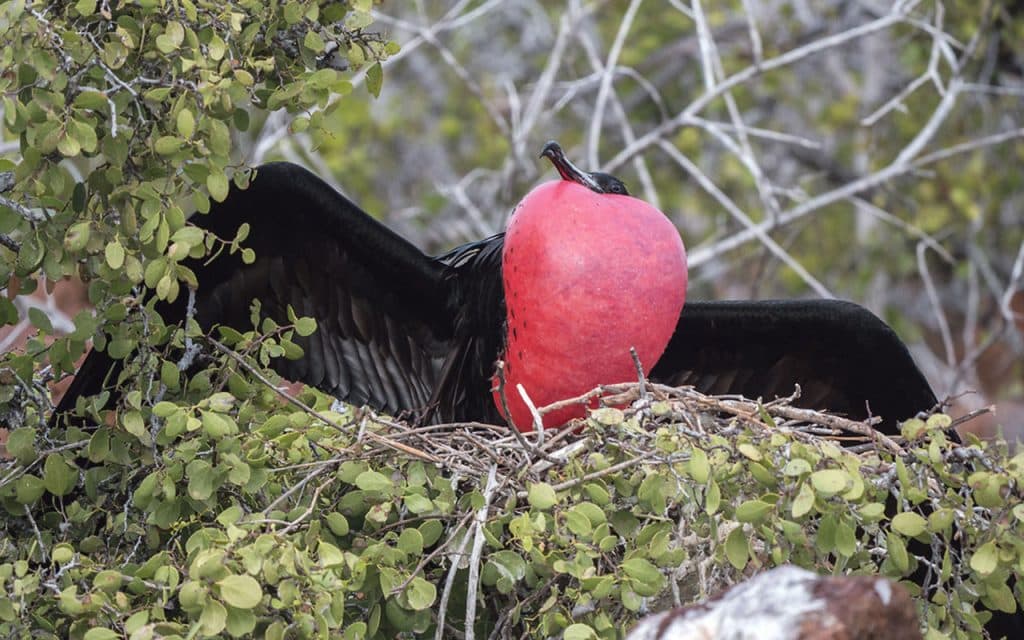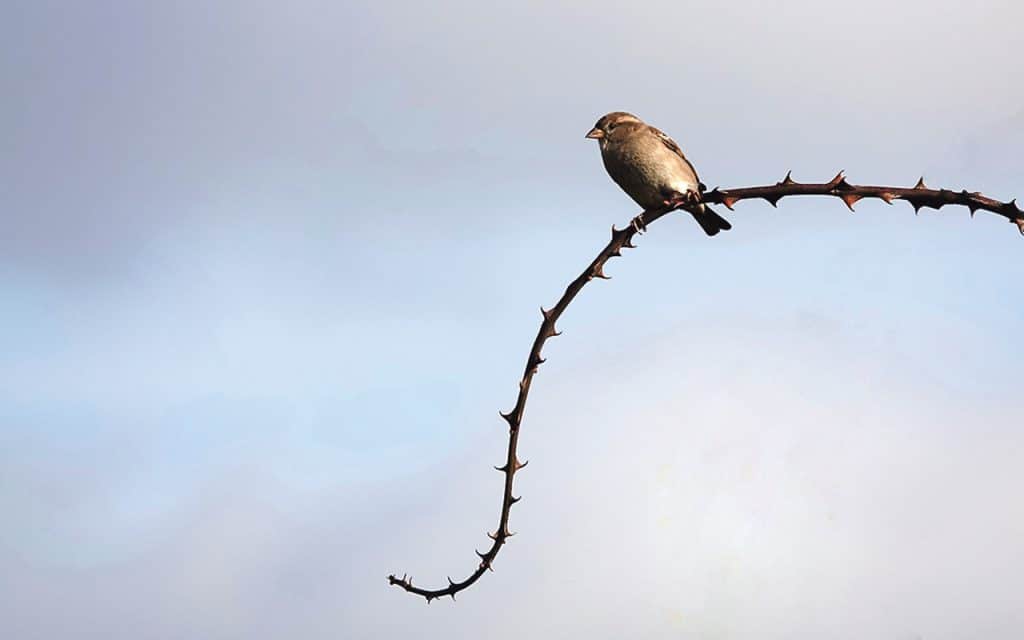This month West Cork Branch committee members Fiona O’Neill and Damaris Lysaght share their ‘best bird experiences’.

Fiona’s best experience in Ireland was In the winter of 2017/18. “During the autumn of 2017, small groups of Starlings began to meet up over farmland near Timoleague, before roosting for the night in adjacent woodland. Over a period of weeks, more and more birds began to gather, resulting in the most extraordinary murmurations. Word spread and people flocked to the area to witness thousands of birds perform their synchronised shapeshifting dance. For me, the very best moment was when the Starlings passed close overhead in a deafening whoosh of wings and it felt like they were close enough to touch.”
Starlings in Winter
by Mary Oliver
Chunky and noisy, / but with stars in their black feathers, / they spring from the telephone wire / and instantly
they are acrobats / in the freezing wind. / And now, in the theatre of air, / they swing over buildings,
dipping and rising; / they float like one stippled star / that opens, / becomes for a moment fragmented,
then closes again; / and you watch / and you try / but you simply can’t imagine
how they do it / with no articulated instruction, no pause, / only the silent confirmation / that they are this notable thing,
this wheel of many parts, that can rise and spin / over and over again, / full of gorgeous life.
A few years later in 2019, Fiona was walking down the Malecon (boardwalk) in La Paz, Mexico. “I was transfixed by large dark birds with forked tails gliding effortlessly high up on the thermals with hardly a wing beat. No one else paid them the slightest attention. Back at the hotel, an ID was suggested, evoking images of adventures on the high seas. The following day, on the journey by boat to our island camp, we passed a raucous colony of these Magnificent Frigatebirds; absolutely extraordinary. It was the start of the breeding season, so we could see the males inflating the bright red pouch on their throat, to attract females. Although a seabird, its feathers are not waterproof, so it never lands on the sea. It drinks by flying low over water and scooping it up. It grabs fish or squid from the ocean surface using its long, hooked bill. They also hassle other birds to drop or regurgitate their food, a practice known as kleptoparasitism, and giving rise to its other name, the Man O’War bird. Many other wonderful birds were seen on that trip, but I’ll never forget my first sight of the Magnificent Frigatebird.”
The first special encounter that Damaris recalls was when helping Megan Morris with her I-WeBS count at Ringarogy near Baltimore. “Across the other side of the estuary there was a big white bird on the shoreline. What was it, a Great White Egret, Mute swan, Whooper Swan, Feral goose? No, it doesn’t seem to be the right shape for any of them. But it’s got its bill stuck in something? More cogitation and deliberation. Could it be a … Spoonbill? Yes! Neither of us had ever seen one and we didn’t realise that that’s how they feed, moving their bill from side to side. A thrilling first encounter with a Spoonbill!”
On another occasion Damaris was birding by herself at Brow Head on the Mizen.” I saw a small bird flit. What is that? Another glimpse. Then a better view. Perhaps a Common Whitethroat? But it looks a bit different. Maybe even a Lesser one? I studied the Collins Bird Guide (bible). The bird was being helpful and appearing frequently. Yes, I’m sure it’s a Lesser Whitethroat, I’m sure. Up drive a few serious birders.
‘What have you found?’ ‘I think It’s a Lesser Whitethroat.’ They looked at it and … confirmed that, yes, it was a Lesser Whitethroat. I was SO chuffed! My first scarce bird identification!”
For her best overseas experience, Damaris was staying in Barcelona for a couple of days with her family. “I really wanted to visit the Lobregat Delta, but none of the family were interested. We had a rental car, but I understood it was a nightmare to find the right spots on the marshes due to restricted parking and no-go areas and so on, and it is impossible to get there on public transport. It was a Sunday and the only day I had free was Monday! After a quick Google I wrote an email to Barcelona Birding Point: ‘By any small chance is there a bird tour I could join tomorrow? I got an immediate response: ‘We have availability for tomorrow… I could pick you up at 07:30 and you can expect to be back at 13:00’. GREAT! It turned out to be just me. My guide Carles took me to four different locations where we found 63 species, including Blue Rock Thrush, Penduline Tit, Spotless Starling, Iberian Green Woodpecker, Purple Swamphen and Fan–tailed Warbler. However, the highlight was a male Goshawk. We had great views of him preening in a tree and then in flight. A most fantastic morning and truly the best €60 I have ever spent!”
Meanwhile, back in West Cork, the spring migration has continued apace with the influx of Hoopoe in unprecedented large numbers, along with an unusually high number of Black Redstarts, as well the usual summer visitors: Blackcap, Chiffchaff and Willow Warbler, and a couple of rarities like Nightingale and Western Subalpine Warbler on Galley Head. Also listen out for the monotone whistle püpüpy püpüpy püpü that announces the arrival of the Whimbrel, or “May Bird”, on its passage from West Africa to its arctic breeding grounds.
BirdWatch Ireland
West Cork Branch News
Upcoming outings being held by the Branch are:
Sunday, May 4:
Dawn Chorus – Liss Ard Estate
Sunday, May 25:
Cape Clear Island.
Visit our website www.birdwatchirelandwestcork.ie for more information about these events. To receive news and reminders about our events subscribe to our mailing list. For more information about the Branch, contact Fiona O’Neill at secretary@birdwatchirelandwestcork.ie.
FB: @BirdWatchIrelandWestCork
B: @bwi-westcorkbranch.bsky.social
I :@ birdwatch_ireland_west_cork


